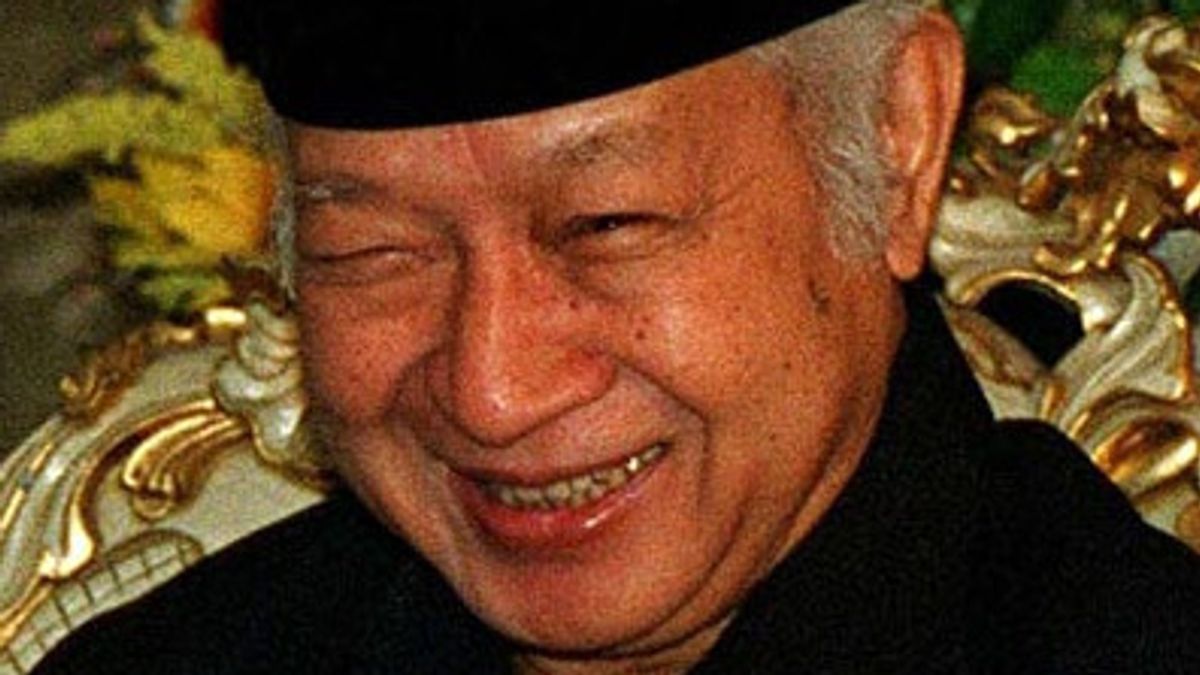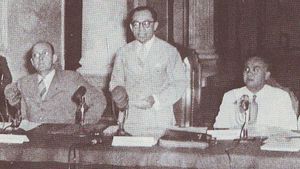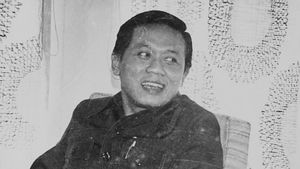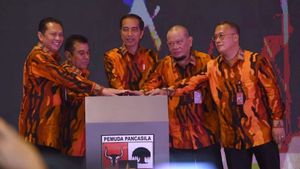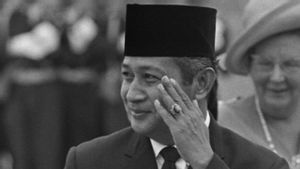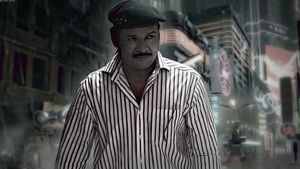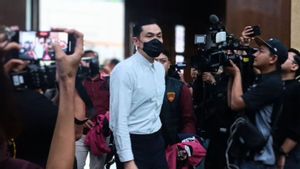JAKARTA - Soeharto is an expert in packaging the image. From the beginning of his career to the peak of his leadership, Soeharto continued to build his image.
As a farmer's son, Soeharto has proven that ordinary people can be the number one person in Indonesia. This positive image is also packaged with a figure who speaks little, acts a lot.
Moreover, Soeharto justified any means to maintain another positive image, from banning and controlling the media. The imaging was successful. He will forever be remembered with many nicknames as the Father of Development, the Father of Self-Sufficiency, and the Hero of the G30S crusher.
Every day, the New Order (Orba) Architect likes to draw himself as a farmer's son from Kemusuk Village, Godean, Yogyakarta. The ambitious image of a farmer's son who later became the number one person in Indonesia was so inspiring to Indonesian children in his day.
Soeharto's life history is often told by teachers in schools throughout Indonesia. During that time, Soeharto not only became a symbol of the success of the peasant children but also became a leader, role model, and hero of the country.
No wonder. Every time Soeharto visits the village, he always gets a very lively welcome. Especially when Soeharto greeted one by those in the crowd, such as farmers, school children, to local officials.

Soeharto seemed to understand that he was a leader who was always heard. His speech was arranged in such a way that it portrayed Soeharto as a leader who knew a lot, was smart, and was right. Even in matters of religion. Soeharto is known as a figure of faith since childhood.
“In the afternoon, Soeharto recited the Koran, learned to read the Koran. This is a compulsory lesson for every child. Qur'an recitation is carried out in violators. Often he is violated until eight o'clock at night, and after finishing the Isya prayer in groups, he returns to his house, and sometimes they are violated all night long", wrote OG Roeder in the book Anak Desa: Biografi Presiden Soeharto (1976).
This flawless figure began to be idolized by the students of class 66. Student support flowed strongly to General Soeharto when the massive demonstration took place in Jakarta.
Students who demanded the dissolution of the Indonesian Communist Party (PKI), reshuffle the cabinet, and lower prices, known as Tritura (Tri Tututan Rakyat) were successfully pacified by Soeharto. This effort was made by Soeharto during the demonstration at the State Palace which was starting to get chaotic.
Thanks to Soeharto's presence, the students were able to relax. They then saw Soeharto as hope. Even one of the Class 66 students, Arief Budiman, Soe Hok Gie's older brother, said, "We know that he (Soeharto) is a soldier who doesn't like politics".
“Soeharto, the son of a farmer from Kemusuk Village, Yogyakarta, emerged from the fog in 1966. He came as Semar – a clown figure in the wayang world to whom Soeharto often attributed: simple and smiling. Like Semar, Soeharto did things that even the knights couldn't do when critical times came".
"He is hailed as a hero who has succeeded in saving Indonesia from the disaster of communism even though he paid for it with heavy bloodshed. Also from the economic disaster caused by hyperinflation", wrote Farid Gaban et al in their article in Tempo Magazine entitled Antara Semar dan Don Corleone (1998).
Soeharto takes care of the image

Along with maintaining his power, The Smiling General is also very good at maintaining his images. Soeharto began to strengthen this image through various efforts and policies. Through subjects in school, for example.
Through the subjects of history and struggle or Pancasila moral education, Soeharto's role is mentioned so prominently. He is also considered a key actor in the series of struggles from the March Sebelas General Attack in Yogyakarta to the crushing of the PKI and its accomplices.
Soeharto was also mentioned as a defender of Pancasila and the 1945 Constitution. Because of this, the roles of Soekarno, Mohammad Hatta, and other figures were not highlighted in many ways.
In particular, government-sponsored history writing includes popular history, oral, and so on. In fact, these figures seem to be complementary in the history of the nation's struggle. This effort seems to agree that the historical narrative was written by the winner.
Not only that. Soeharto also controlled the media to perpetuate his positive image. Whether it's in radio programs, television, to newspapers. As for those who reject or narrate how bad Soeharto is, the New Order government will not hesitate to take firm action.
Because of that, to control the media, the New Order government carried out strict censorship. This step allowed the New Order government to be more flexible in filling out content that matched the positive image of Soeharto and his government.

“TVRI's programs, which at that time were the only ones, clearly became an effective mouthpiece for the dissemination and socialization of government policies. Not only in terms of showing Soeharto's heroic films such as Serangan Umum Sebelas Maret and G30S 1965.
"But also the Klompencapir events, the extensive, deep, and monotonous coverage of the activities of Soeharto and his family. All of that, once again strengthens the image of Soeharto's heroism which is incarnated as equal to the State itself", said FX Baskara Tulus Wardana in the book Menguak Misteri Kekuasaan Soeharto (2007).
To legitimize his image, Soeharto used Pancasila to threaten political opponents in 1980. This effort to spread fear also appeared at the opening of the Indonesian Armed Forces (ABRI) Leadership Meeting in Pekanbaru, Riau on 27 March 1980.
Then, a more personal narrative was delivered by Soeharto in a speech without text on the 28th anniversary of the Sandhi Yudha Troops Command -- now the Special Forces Corps -- in Cijantung, Jakarta, April 17, 1980.
"Instead of us using weapons in the face of changes to the 1945 Constitution and Pancasila, we should kidnap one person than two-thirds (members of the People's Consultative Assembly) who want to make changes", Soeharto said in his speech.
*Read other information about SOEHARTO or read other interesting articles from Detha Arya Tifada
Other MEMORIES
SEE ALSO:
The English, Chinese, Japanese, Arabic, and French versions are automatically generated by the AI. So there may still be inaccuracies in translating, please always see Indonesian as our main language. (system supported by DigitalSiber.id)
